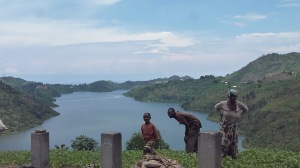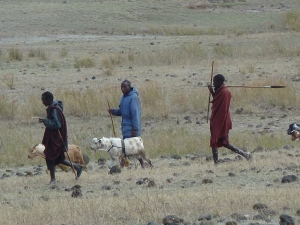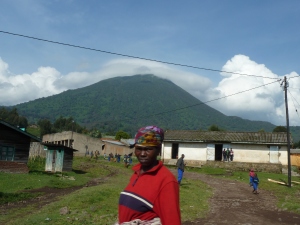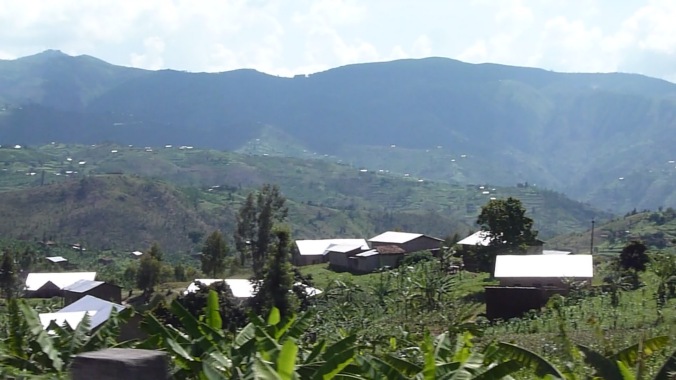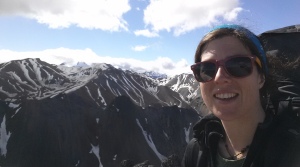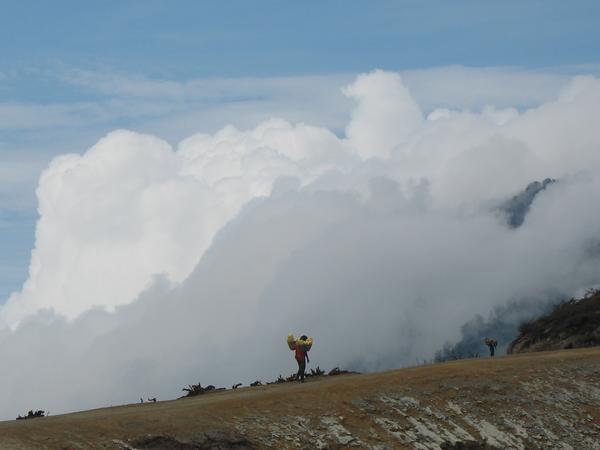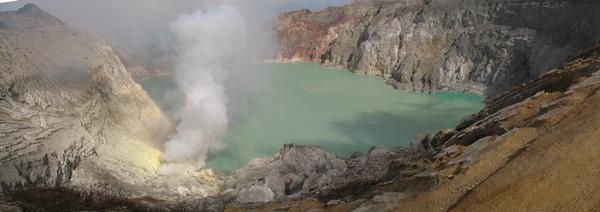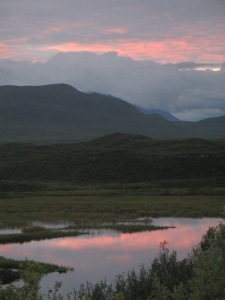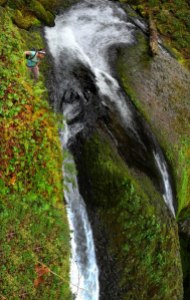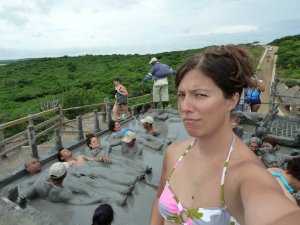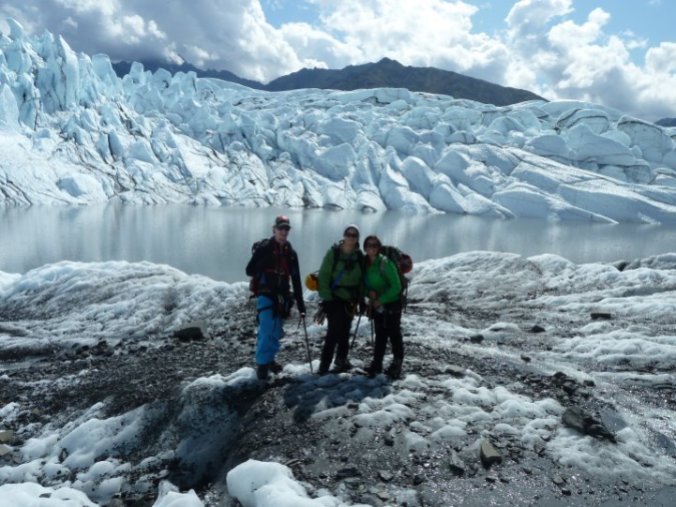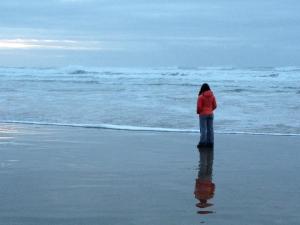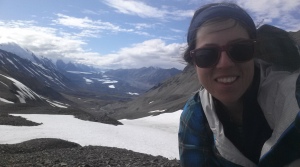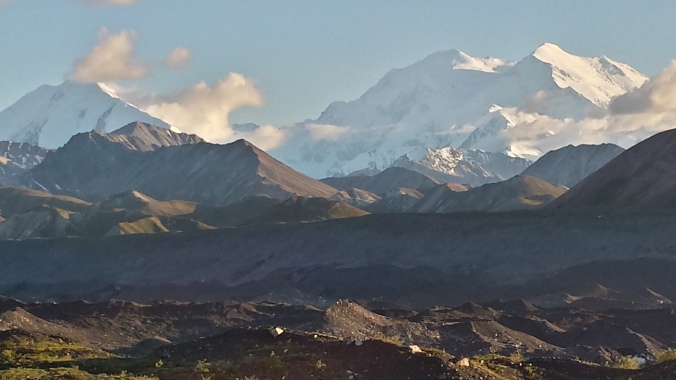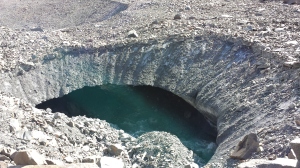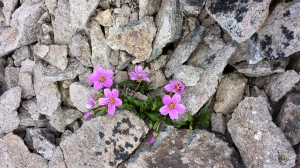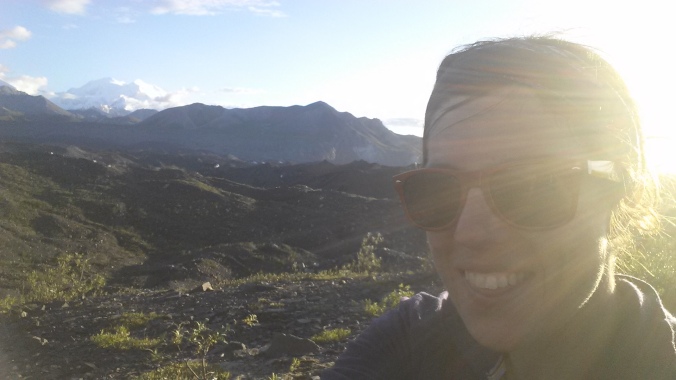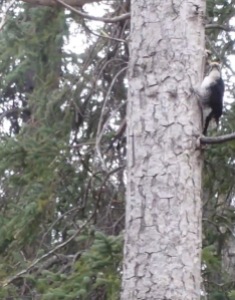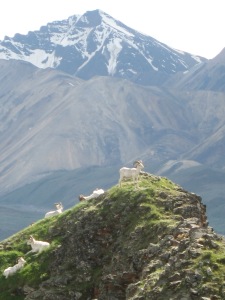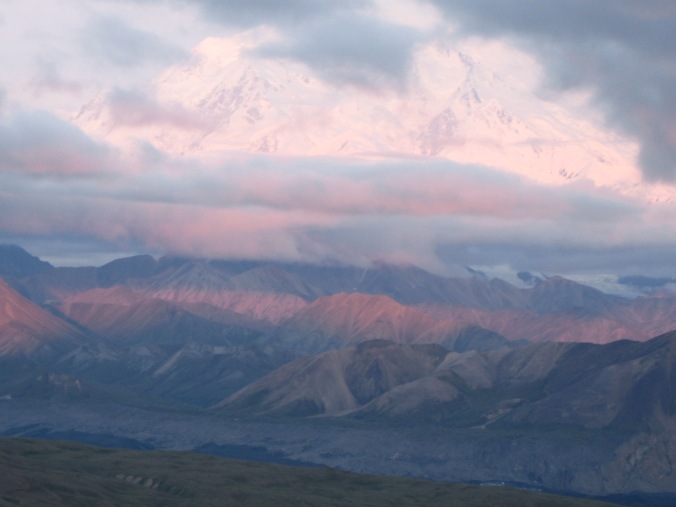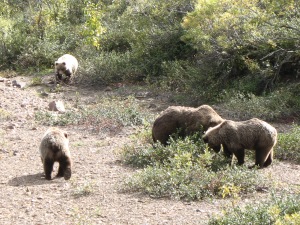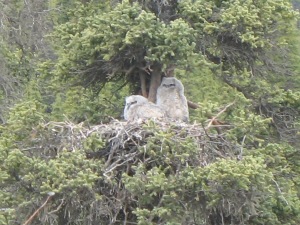My rootless existence was finally catching up with me. I’d banked on a job in a country I didn’t live in and because of my foolishness I would now be broke and unemployed. Moreover, I’d walked away from a perfectly good job that had paid me decently and allowed me to exist in the seasonal lifestyle without much worry. What would I do now? Broke and unemployed weren’t my thing. I’ll admit that broke-ish might happen occasionally, but only in a semi-calculated moment when employment was always right over the next horizon. But now I’d have to wait. Not only hadn’t I landed an overseas dream job, I’d missed out on all the other desirable jobs this season and would surely have to work some crap cashier job until winter came along. This summer was shaping up to be worse than the work scene I was walking away from, and yet I had worked so hard to cultivate skills and a good work ethic—what had I done?
_______
The ground was shifting underneath me, but in the seasonal lifestyle this is a perpetual truth. We seem to always be arriving or leaving. We create a seasonal cadence that meanders somewhat predictably from one place to the other, and occasionally leverage our skills to move up within a company or to move on to somewhere new. It’s just like what everyone else does, only we never seem to fully settle. We cultivate skills and climb employment ladders, yet we can opt out of our current situation pretty easily. We’re constantly re-sculpting our professional lives. It’s a shifting we can control, like the flow of snowboarding through powder in the winter or kayaking through a rapid in the summer. The more masterfully you handle the flow of the elements around you, the more the odds diminish that something could fall apart in the next cycle.
In the seasonal world, sometimes everything comes unglued at once—work, relationship, family issues—it’s the same old human story except it tends to fracture amidst trying to pack up our lives and move a few thousand miles away. Thus we struggle to regain flow in all dimensions of our lives at once; to not fall behind and become reactionary but to surf from one season to the next: flow through powder, dance though life’s rapids, and master the dynamics of each season. The uncertainty and constant redefinition can be scary and that’s why most people don’t pursue it. We nomads do because to us the risks are worth the reward.
Redefinition is scary and intimidating, but it’s also liberating. Who will you be when you remove the constraints of your old self? This is an evolution. Looking back, there will be a point where we could have proceeded down a much different path than we did. I hope we like our vantage point when we get there.

A pretty spectacular vantage point: Denali looms above Reflection Pond, more than 20 miles apart from each another
_______
I found myself at such a crossroads last spring. As a seasonal employee I’d worked out a rhythm of working in Denali National Park in the summer, and teaching snowboarding at various ski resorts in the winter. I’d burned out on the Denali job, however, and last summer I needed a break.
So I made an agreement with myself to not re-apply to the Denali gig. The job had been perfect for me in many ways for several years. I made decent money in the most beautiful place in the world—a landscape that in turn shaped my adulthood. The job was challenging and I kicked ass at it. Life seemed perfect for many years, but I’d grown and the job had not. I was stifled in some ways and burnt out in others, so if the job wasn’t going to evolve, then I had to. To ensure that outcome I wouldn’t even apply; I wouldn’t let it be an option. I could reassess the following summer, but for this season there was no going back.
A “summer” snowboarding in New Zealand seemed like the perfect antidote to what I was feeling. Once upon a time, in 2005, right after my first seasonal job I’d started looking into the idea of a never-ending summer in New Zealand, but I’d gotten bogged down in the process—too green to the seasonal lifestyle to understand the process—and meanwhile an old friend offered me a job in Alaska. This crossroads felt like the perfect time to return to that dream.
Since I’d last dreamed of New Zealand I’d followed my love of snowboarding and turned it into a lifestyle. I’d become a snowboard instructor and developed that skill set over the next eight winters, simply because it made me happy. I’d earned my snowboarding level-3 certification, accepted a promotion to snowboard co-supervisor, and grown into the training director of the snowboard staff at Alyeska, Alaska’s premier resort. I looked good on paper and to top it off, I had a mentor who certified instructors in New Zealand resorts and would put in a good word. I was in.
Except, I wasn’t. There wasn’t an opening for a full-time snowboard instructor at the resort I applied to because the entire full-time staff was returning. I hadn’t applied anywhere else, and at this point I’d missed my chance to. This was not how it was supposed to work out. When reality hit that New Zealand wasn’t an option and my Denali job wasn’t either, I panicked. And for the first time in my life, I found myself depressed. Yet, soon I came to a realization.
This is the moment that I write about in other people’s lives. Every professional nomad has had at least one important crossroad that shaped them into the people we revere today. During interviews, people divulge their life stories which, without fail, includes a moment in their professional lives when they could have chosen conservatively but instead they chose the path that didn’t make much financial sense at the time.
This was my moment, but it didn’t feel like the precipice of destiny. These things never do. Only in the Hollywood final edit, when the outcome is sealed and the theme music can be selected accordingly, does the hero stand on the precipice of destiny. On the contrary, this was scrambling for bearings in a cloud of disoriented panic. So how did I know it was my moment? Because it was either that or accepting a big ball of failure that given time would settle into complacency—a vegetative state I could not accept.
Hardship does not define us, but what we do with hardship does. The way we react to difficulty reveals ourselves on an intimate level. What will we do with that energy? Will it beat us down or can we employ it in search of an answer? In the moment, we are blind to our future successes. Perhaps all we see ahead is a chasm of possible failures, but we can’t let this paralyze us. Hardship is an opportunity for growth, and however we respond to it we must take the first step with intention.

A park service wilderness resource specialist contemplates his route above the confluence of the Muldrow and Traleika glaciers in Denali National Park, Alaska
_______
In some ways I’ve always known this because my mom taught me. She had to. She isn’t a nomad but she is a survivalist. I made sacrifices in my life to make my summer work and explore new options, but I couldn’t imagine having to think about this on a broader scale, like if people were dependent on me. But my mom did.
My mom has followed her passion of making music my entire life. At one point, when I was a little kid, she worked three jobs to support her four children. One of them, the job nearest to her heart, was as a church organist. At the time it was only part-time work, but my mom had realized that she needed to make music every day of her life or something inside of her fell out of tune. So she juggled multiple jobs to orchestrate this. For awhile she taught life skills to inmates at the county jail, such as how to balance a checkbook and how to read a map, and later worked at the local bookstore, which fit with her love of reading. My mom did what she had to do to support her life as a musician. She told us this frequently as we got older; it was kind of her mantra.
But she didn’t have to say it that way. It was when she began working at the bookstore that she came to an important realization. “I could say it one way or I could say it another way. One way I sounded disgruntled: ‘I have to work at the bookstore because I can’t make a living as a musician.’ Or I could change it and say, ‘I work at the bookstore to support my life as a musician.’” By choosing a different outlook on life, my mom changed the world around her.
As an adult, I see the bigger truths in my mom’s words. Many single parents scrape by financially, and at the end of the day those that juggle multiple jobs often feel over-worked, underpaid, and completely unfulfilled. Of those attributes, my mom hid her feelings on the first two from her kids, and the third one just wasn’t her. We couldn’t afford a lot of life’s indulgences but we were taught to feel rich in other ways, and music was one way my mom always made sure she had something of value growing for herself. It brought her joy and strengthened her when the challenges of raising four (adorable) twits wore her down. She supported her dreams and her family, too, and as time went on her positivity and dedication paid off.
More of her professional life was absorbed by her passion, until it finally came together at the church that meant so much in her life. After ten years of service, she retired as a full-time organist and choirmaster at the church of her faith that she tried to raise her kids in (a good attempt). Of course, the ten years was just the crown on her career. In total, she has served as a church musician for more than fifty years, and continues to be requested for substitute work all over her Chicagoland area in her retirement. She did what she had to do to support her family while staying true to herself, and she continued to reach new heights of success in her professional career. If she could do all that while raising four kids, the rest of us can adjust our dreams to find similar balance and continue moving forward. Do what you have to do to support your life as whomever you want to become.
_______
So there I was, not standing on the precipice of destiny, but adrift in a swirling eddy in the river of life, and I realized the only way to mitigate despair was to paddle toward something. This was an opportunity to architect something different in my life. I would focus on my website and look for some part-time guiding opportunities. Whatever was next, I felt like I had the support of all the professional nomads behind me.

The author teaching an Alaska Geographic course participant how to cross a glacial river. (photo credit: Jeffry Hesse)
So I reached out to friends and connections and landed random guiding jobs. I guided backpacking, packrafting, and field-camp based educational courses in Denali National Park. I was asked to volunteer on an intense week-long backpacking trip to locate and retrieve data from long-term glacial monitoring equipment deep in the Alaska Range. I spent a month lake kayak guiding in the Eastern Sierra and hanging out with one of my best friends of all time. And in the spirit of change, I’m now on a new adventure teaching snowboarding in Telluride, Colorado.

Hiking in to the Teklanika River with my boat on my back (a packraft), guiding for Alaska Geographic and Traverse Alaska.
Although I didn’t work much this summer, I did enjoy every single day of work. Every day had value and made me a better person, and I’d lost those feelings in my previous job. I took a risk and steered myself toward something I enjoy, and wherever this was going it was down a good path. My depression faded. I was engaging in the world around me and encouraging others to do the same. I loved every job I took—working outside and sharing the outdoors with fertile minds—each one encompassed similar values that entranced me when I first began teaching snowboarding ten years ago. In between guide work I learned more about behind-the-scenes website operation and wrote incessantly. Every day allowed me to utilize skills I’d acquired in Alaska, through how I chose to engage in Alaska, and this revitalized me. When I doubted myself in some ways these jobs reinforced how far I had come, and even better, continued to propel me forward.

A packrafter on an Alaska Geographic and Traverse Alaska trip paddles down the Teklanika River.
What I learned is that it is not just one moment, but a series of decisions that defines us in the long run. This moment—this big crossroads in the lives of the professional nomads I write about—is not a leap of faith or a precipice to drop from, but rather a decision to move forward followed by another one after that, and another after that. It begins when we decide to stop giving up. We pull into the current of life and each paddle stroke maneuvers us toward our future selves. Though we must adapt to survive, it’s up to us to steer the boat toward someone we wish to become.
_______
It’s easy to blame chaos for the hardships and heartaches of life, but that’s not the complete picture. If everything were perfect we wouldn’t have risk—the great cosmic jester that leads to the best things in life, like comedy, love, and personal bravery. Stumbles, even big ones, allow us to grow into our future selves.
For me, New Zealand seemed like the best way to grow. My story felt like it was coming full circle. The stars seemed to align and enshroud me in a moment of destiny, so I was floored when the universe didn’t share that dream. It felt like I fell from the precipice of destiny into a chasm of defeat. Two options lay before me: I could resign myself to failure, snag some simple employment, and slowly drain my spirit into complacency; or I could trudge forward without a road map in search of adventure. At least that’s how I chose to see them—resignation versus blind adventure—so I took the second option, accepted the risk, and went forward whistling an improvised tune. As I see it, the New Zealand mishap aligned me with whatever new direction I’m now headed. Writer, adventurer; I will do what I must to support my life as a professional nomad.
Redefinition is scary, but on the other side lies something good: ourselves. Will we let hardship define us or will we shape it into something else? The only way to come through life unscathed is through apathy—a true failure in this world of countless things worth fighting for. As long as we have passion we are empowered to try, and as long as we try we maintain forward momentum. Therefore, we must keep that internal fire alive; it’s the only way to heal. Life isn’t about an end goal but, rather, enjoying the adventure—even when it winds in unintended directions. Dreams don’t always work out as planned, but a life led with intention embraces adventures not yet imagined.

The author embarking on a new adventure in Telluride, Colorado. (photo credit: Dana Miraglia)
[All photos, aside from the 80s flashback photos, my mom’s portrait, and this one, were taken on the job or while volunteering this summer. Life is good]











